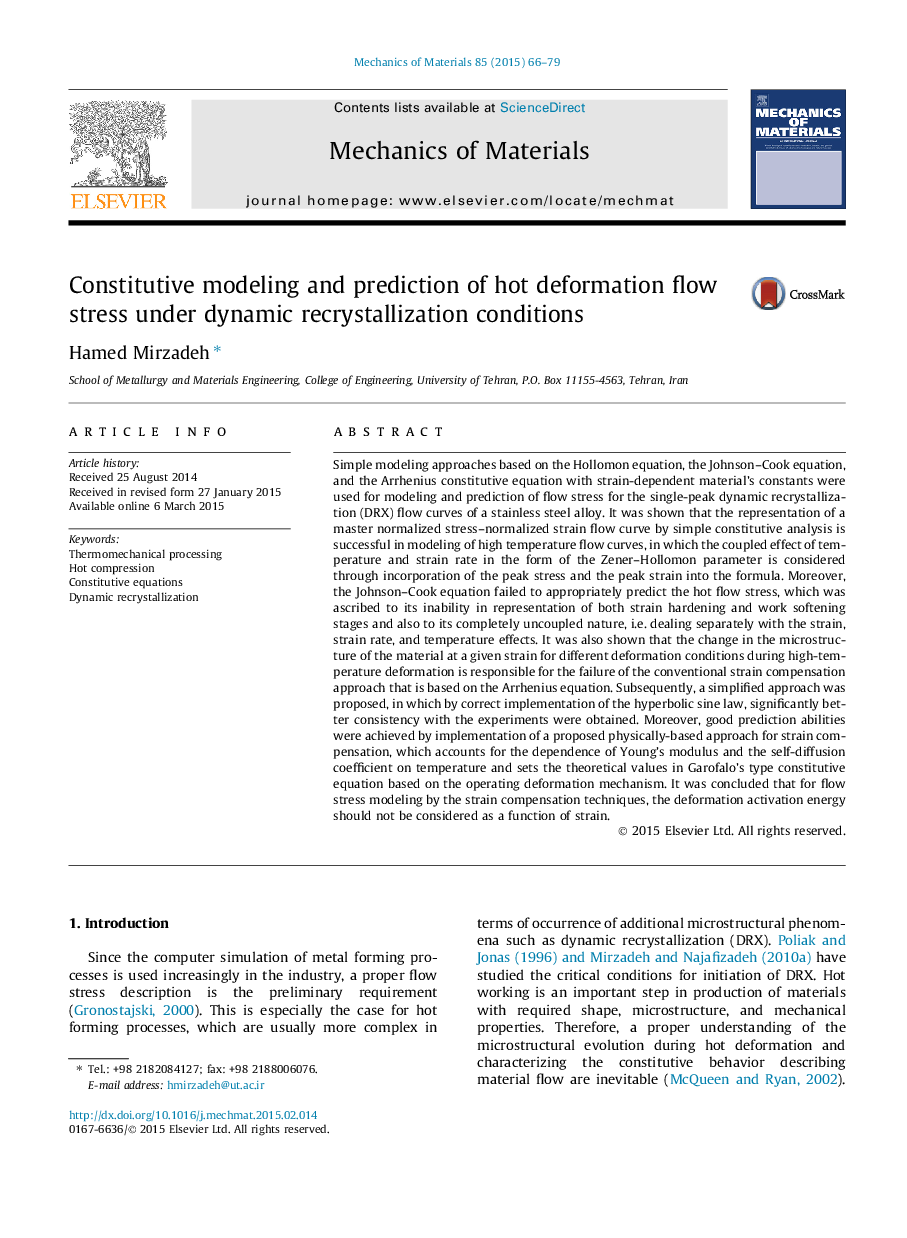| کد مقاله | کد نشریه | سال انتشار | مقاله انگلیسی | نسخه تمام متن |
|---|---|---|---|---|
| 797566 | 1467455 | 2015 | 14 صفحه PDF | دانلود رایگان |
• Modeling by the Hollomon, Johnson–Cook, and Arrhenius constitutive equations.
• Modeling based on the master normalized stress–normalized strain flow curve.
• Coupled effect of temperature and strain rate in the Zener–Hollomon parameter.
• A physically-based approach of flow stress modeling through compensation of strain.
• Correct application of hyperbolic sine law for consideration of strain effects.
Simple modeling approaches based on the Hollomon equation, the Johnson–Cook equation, and the Arrhenius constitutive equation with strain-dependent material’s constants were used for modeling and prediction of flow stress for the single-peak dynamic recrystallization (DRX) flow curves of a stainless steel alloy. It was shown that the representation of a master normalized stress–normalized strain flow curve by simple constitutive analysis is successful in modeling of high temperature flow curves, in which the coupled effect of temperature and strain rate in the form of the Zener–Hollomon parameter is considered through incorporation of the peak stress and the peak strain into the formula. Moreover, the Johnson–Cook equation failed to appropriately predict the hot flow stress, which was ascribed to its inability in representation of both strain hardening and work softening stages and also to its completely uncoupled nature, i.e. dealing separately with the strain, strain rate, and temperature effects. It was also shown that the change in the microstructure of the material at a given strain for different deformation conditions during high-temperature deformation is responsible for the failure of the conventional strain compensation approach that is based on the Arrhenius equation. Subsequently, a simplified approach was proposed, in which by correct implementation of the hyperbolic sine law, significantly better consistency with the experiments were obtained. Moreover, good prediction abilities were achieved by implementation of a proposed physically-based approach for strain compensation, which accounts for the dependence of Young’s modulus and the self-diffusion coefficient on temperature and sets the theoretical values in Garofalo’s type constitutive equation based on the operating deformation mechanism. It was concluded that for flow stress modeling by the strain compensation techniques, the deformation activation energy should not be considered as a function of strain.
Figure optionsDownload as PowerPoint slide
Journal: Mechanics of Materials - Volume 85, June 2015, Pages 66–79
